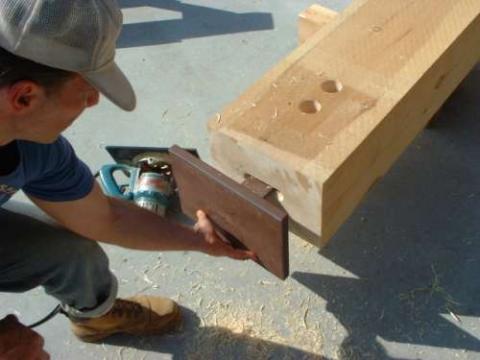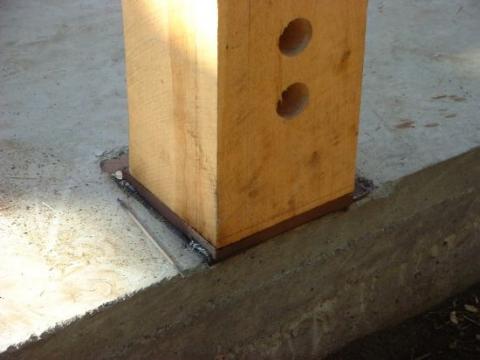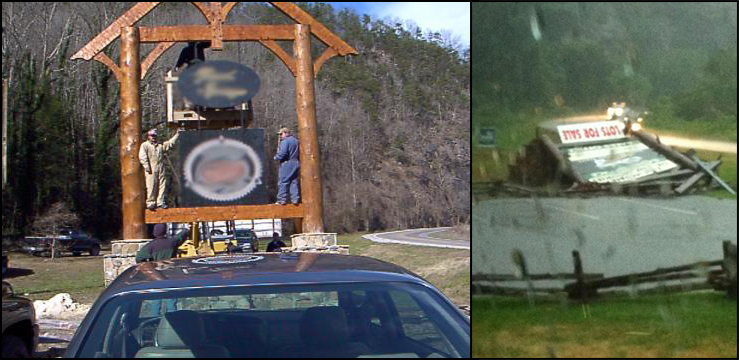We often get questions about using mixed materials on our homes. This has been a staple of the log and timber home industry for many years, and while some companies have this technique down to a science, others struggle.
It seems like a simple enough question. Can I use log and timber together with stone and concrete materials? While the answer is almost always “Yes!” there are a few things to consider, and a few more to avoid. Below are some typical examples of what to do, what not to do, and a few methods we have employed over the years.
Concrete or stone must not touch untreated wood products. This can’t be stressed enough. If a log or timber support is to rest on, or be supported by, concrete material, and especially if used on the exterior of the home, you must keep the two materials from touching. There are several products on the market today specifically designed for this purpose. Products like Post Pal, and Timberlinx’s A475 Connector are designed for this purpose. The Timberlinx connector requires an additional standoff, and acts more as an uplift protection, while the Post Pal is more of a traditional connector made of steel plate. You can also make the connectors (Figure 1.).

This is fairly straightforward, and unless the product is located where uplift or side force is a problem, this is usually the cheapest alternative. First, make sure the codes enforcement in your area is aware of the post connectors. If they require engineering to show the amount of weight it will handle, it is typically cheaper to purchase a pre-designed and manufactured engineered product like those listed above. If not, a homemade device can sometimes work just as well. (Figure 2.)

If raw lumber is placed on concrete, or worse yet, in concrete, this problem will be quick to cause serious issues. An example of this problem is below (listed at bottom of page in Figure 3).
The after effect of a few years of rain and moisture are not a welcomed outcome, and will almost always end on a sour note. This log post (Figure 4) had been rotting in the concrete, and a storm finally came through and finished off the sign.
Since this is a sign as opposed to a home, it probably receives about the same amount of rain as a typical porch post on most log homes.
So, if you intend to incorporate mixed materials into your log home, make sure your wood has been properly treated first. If not, keep issues at bay by preventing untreated wood from touching other materials. Remember: an ounce of prevention is worth a pound of cure!



